Harry O’Brien; Footballer, Collingwood Magpies
This was a presentation I enjoyed even as I boggled. Part of me is an extremely cynical American who on the face of it took parts of his talk to be: I’m all about promoting myself above anything. The other part of me found him very genuine and thinking he probably did a lot of good work, promoted a lot of worthy causes and didn’t flaunt his efforts to make those charities about himself. There was a RMIT journalism student sitting at my table who was a huge fan of O’Brien. He asked O’Brien for his autograph and O’Brien was really nice about it. If you get the chance to hear O’Brien speak on this topic, it is worth it. He was asked to speak about social media from the athlete perspective.
- Denying social media is denying the multitude. Social media is a vehicle for sharing the message that you want to share.
- Why should athletes use social media? To share the message that you have. Harry was asked by Web Guru to contribute to the Collingwood site. This developed into his website, Harry’s World.
- Social media can effect positive change.
- If social media is good enough for Barack Obama and Julia Gillard, then it is good enough for him.
- Harry did his first interview in December 2004 after he was drafted. He used the interview with The Age to share is ideas and beliefs. He stands for sharing hope through positivity.
- Players complained to him about their privacy being violated. He thinks fans just want insight, glimpses into his life in a controlled manner.
- People started uploading pictures of him all over Facebook. He ran out of friends. He was overwhelemed. Then he moved to Twitter. He now loves Twitter. Then he started his own website, which was his dream: Having people here what he has to say.
- Social media is unfiltered. It gives you the essence of a person. He’ll always have insight into the Collingwood Football Club. He can share pictures, videos and eventually merchandise.
- People want Harry to speak! Social media allows him to share his message.
- Harry O’Brien doesn’t really follow sport stars on Twitter, but is aware of what they are doing. He has his own style and doew what he feels is right based on guidelines and a path.
- People are made u of energy. Science has proven it.
- Some one dated $50,000 to one of his charities after hearing about his work. He uses social media but he is not always aware of the real world impact of it.
- Harry O’Brien doesn’t care about other players ranting about service they get. O’Brien studied sociology. Just because you’re a sport person and society values that, it doesn’t mean you should be treated special. You should be proactive, not negatively complaining about bad service.
- O’Brien says football is his profession. Football is like the bait, so he can share his message. His football comments are so general that the club doesn’t have a problem with his activities. If the club wanted to use him more for inspiration, good luck to them as motivation should come from with in.
And that’s it. Those are all the presentations.
Related Posts:
Alana Fisher; Manager, Digital and Social Media (FIFA World Cup Bid), Football Federation Australia
This was another one of those presentations that I really found insightful as it explained how an Australian sport organization handled it. I was also able to contrast it with two of the state bodies that I’ve some familiarity with from having talked to their W-League representatives. There were some numbers that were really impressive but then put into the context of membership appeared less so. This doesn’t appear to a problem unique to the FFA though as an AFL club representative said that when you looked at the number of people who fan/like the team and then hide them from their feed, it can be shockingly high. I just didn’t take that many notes for this session as some of the numbers were a rehash.
- COI : Cost of Inactivity.
- You need a community manager. Community managers deal with content and moderation.
- They have over 160,000 people supporting their World Cup bid fan page.
- They have around 100,000 fans for the Socceroos on Facebook.
- They have a policy similar to that of Essendon regarding moderation.
- A good post has 250 comments.
- The coach decided to not allow players to use social media during the World Cup. FIFA also has their own guidelines for social media usage by players.
Nick Marvin; Chief Executive Officer, Perth Wildcats
I wasn’t expecting to take as many notes during this presentation as I did. The organization seems very on the ball with what they are doing. I really enjoyed this presentation.
- Marvin is not a sport guy. It is not his background.
- He has a sporting model based on the business model:
Top of triangle:
Member
Customer
Advocate
Fan
Prospect
Bottom of triangle.
- Winning isn’t everything. Engagement and tribal belonging are more important.
- Converting fans into paying customers: Specia deals on Twitter, discount codes. Target Perth Wildcat fans using e-mail.
- 51% of Facebook fans are likely to buy. 67% of Twitter followers are likely to buy.
- 35% of women are looking for deals online.
- CRM to SCRM: Need to move that way.
- Broad traditional media campaign is important to run but it is important to run that parallel to a social media and e-mail strategy.
- Going through social media, it allows:
1) Real time,
2) Direct/No intermediaries,
3) More authentic,
4) Less noise,
5) More frequent, and
6) Appropriate length.
- Social media allows real time feedback.
- The Perth Wildcats players sign a contract with the team for ethical behavior and community work.
- You need to monitor your brand.
- BackType and Social Mentions are two tools to help you monitor your brand.
- The Wildcats hire for character first. Character helps to build a brand.
- The Perth Wildcats use social media to monitor staff welfare. One person who the CEO saw tweet about feeling ill he talked to and suggested they go home if they are not feeling well.
Panel discussion: Nick Marvin, Jonathan Simpson, Jeramie McPeek, Alana Fisher
This was interesting but not as much interaction between panelists as there could be. It was at times more of a dialog with the audience. Still, lots of interesting things to learn from the panel.
- The Wildcats have increased their ticket prices 35% just to decrease the demand.
- The AFL is watching the NBA is doing and checking their own policies for online broadcasts as it relates to radio/audio.
- Steve Nash does his charity work quietly, without broadcasting it.
- Essendon has the best merchandising sales in the AFL. Essendon has a good situation as many advertisers approach them directly to cut their own deals, unlike other clubs who are hamstrung by the Telstra deal.
- Essendon encourages players not to look at comments. The club has talked with players about managing Facebook, and educating players in how to deal with social media.
- The Suns get in contact with Twitter people when people impersonate players and management.
- The AFLPA is working on snuffing out fake accounts on Facebook as they can be problematic.
- The Perth Wildcats CEO sat down and talked to a player who was slagged in the blogosphere.
Related Posts:
On July 7, 2010, I attended the Digital Sport Summit held in Melbourne, Victoria. I was really excited to attend for several reasons. First, many of the speakers were from Australian sporting organizations. Some of the speakers represented clubs and the league I am doing my research on. Second, the topic involved social media. I love social media and better understanding how it is used from an organizational perspective because that can have an important impact on how fans organize themselves. Third, it was a chance to get out of Canberra. I love the people I’ve had an opportunity to talk to up here including the Canberra Raiders and Canberra United but the market conditions are really different than those that exist in other parts of Australia. I also love Canberra but I wanted to go some place where I could get from Point A to Point B and pass by several coffee shops. I also wanted to see the penguins. Lastly, I wanted a chance to meet some of the people I’d gotten to know on Twitter who have been helpful in teaching me more about Australian sport.
The speakers included Ed Wyatt, Jeramie McPeek, Anthony Harrison, Peter Jankulovski, Finn Bradshaw, Darren Rowse, Alana Fisher, Nick Marvin and Harry O’Brien. Below is a gallery of some pictures I took from my seat in the back (where I had a table to write on, could use Twitter on my iPhone with out being annoying, and where I could do data gathering during presentations I was less interested in). The next two or three posts will include notes from the various sessions I listened to. I’ve decided to put them into separate posts because one big post would be really difficult to read.
Before getting to those posts, I just wanted to say that the event was really fantastic. I got a chance to meet a few people from the AFL including two guys from the league and two guys from the Essendon Bombers. (And they were polite when I attacked them with HERE IS A PAPER AND DATA NOT ABOUT YOUR TEAM BUT TO SEE WHAT I CAN DO.) Some of the presentations answered questions I had regarding why data was acting the way it was and explained some of the decision making going on that impacts the fan experience. It also did this from an Australian sport perspective, with many presenters giving context for how this compared to American and European social media usage. They presented organization, the media and athlete perspectives. This was useful because it helped put all these pieces into a larger context for how the larger sport industry functions. If Anthony Alsop and co. put on the event again with a similar price point, I’d happily try to go again.
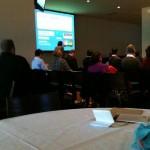

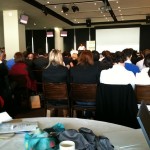
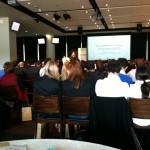
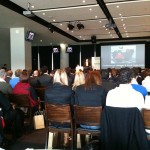
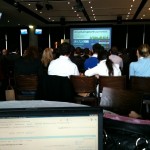
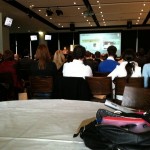
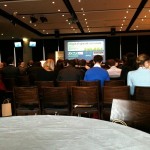

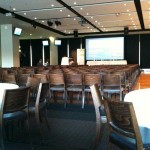
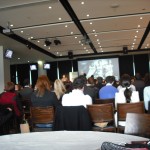
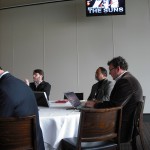
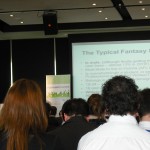

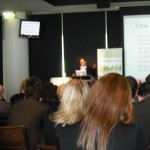


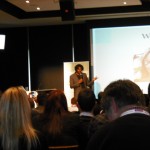
Related Posts:















